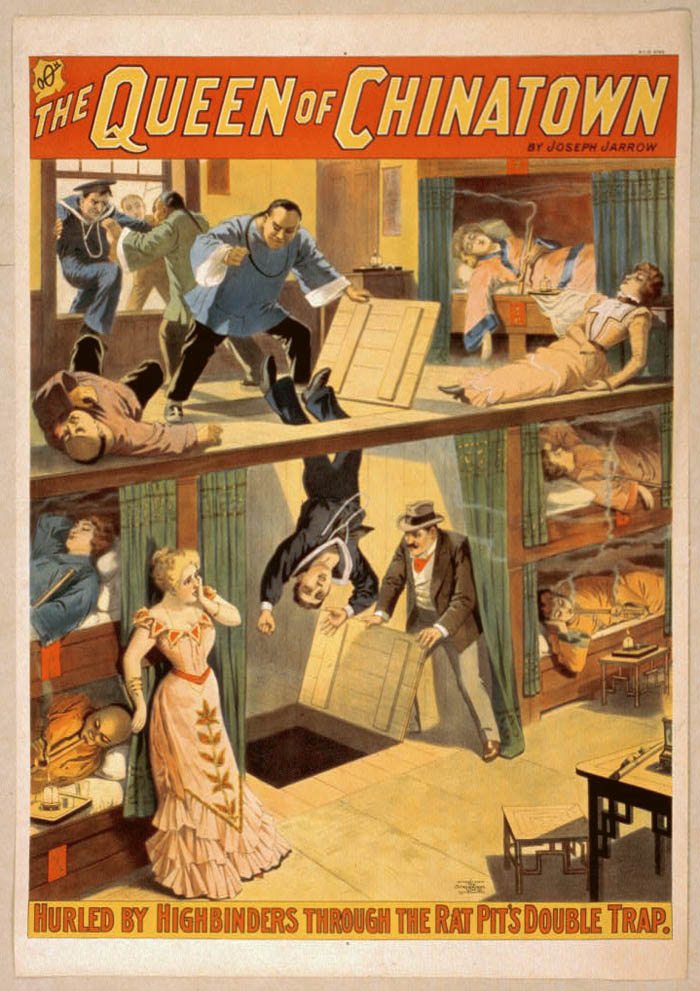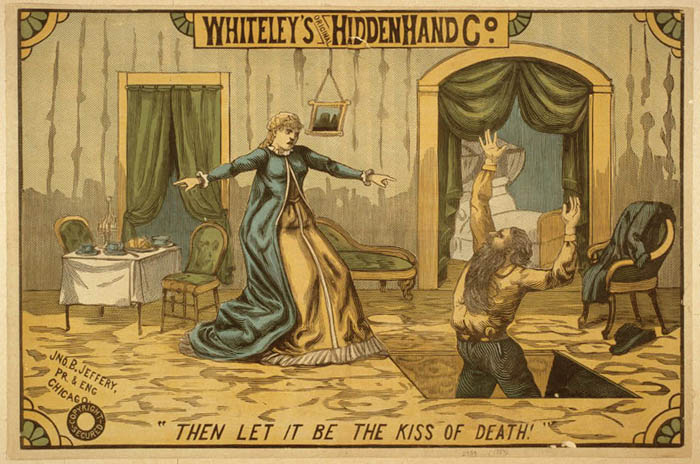 [Image: Poster for “The Queen of Chinatown” by Joseph Jarrow, courtesy of the Library of Congress].
[Image: Poster for “The Queen of Chinatown” by Joseph Jarrow, courtesy of the Library of Congress].
Someone should write a short history of the trapdoor as a spatial plot device in Broadway plays, literary fiction, Hollywood thrillers, dreams, CIA plots, and more. How does the trapdoor—as an unexpected space of strategic perforation and architectural connection—serve to move a plot forward and to give spatial form to characterization?
The “Queen of Chinatown” poster seen above, for instance, with its sprung floor collapsing beneath the weight of a hapless sailor, seems to promise an entire urban district—“Chinatown” as an Orientalist fantasy of inscrutable passageways and other devious spatial practices—illicitly Swiss-cheesed with unexpected wormholes. Chutes, pits, wells, and shafts are perhaps distributed throughout the neighborhood, we’re led to imagine, giving the erstwhile “Queen” her strategic mastery of the area. Chinatown becomes a hive of “mysterious Chinese tunnels,” a porous space guarded not through high fortress walls or even by watchmen or CCTV, but through a camouflaged network of surprise openings, like architectural sinkholes, that no one can predict and of which only one person knows the true extent.
That poster suggests an alternative version of Christopher Nolan’s recent heist film, Inception: there are opium addicts slumbering in a warren of stacked bunkbeds in an off-the-books Chinatown dream academy, and there is a man—an anonymous investigative agent of the state—crashing through the floor into this world of broadly Asiatic decor. A multi-layered hive of architectural space seen sliced through in section, where trapdoors lead to further trapdoors. Inception as an 1890s heist caper, serialized on the popular stage.
 [Image: A still from Inception, courtesy of Warner Brothers].
[Image: A still from Inception, courtesy of Warner Brothers].
In any case, a spatial history of trapdoors—in film, literature, myth, dreams, and theater—would make an amazing pamphlet or book, perhaps part of a larger series of pamphlets looking at other minor architectural typologies—like log flumes and National Park trail structures and hay mazes.
 [Image: “Then let it be the kiss of death!” Courtesy of the Library of Congress].
[Image: “Then let it be the kiss of death!” Courtesy of the Library of Congress].
The two posters reproduced here, both available through the Library of Congress, are at least one place to start.
